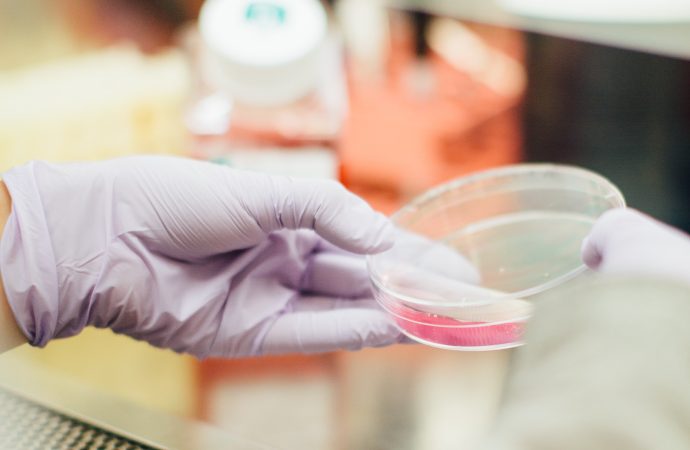For patients, a diagnosis of cancer is one of the worst possible outcomes. There is so little information available about this disease that it is terrifying just to consider. Cancer is not a single disease but rather a group of diseases with a wide range of possible causes and outcomes. We’ll go over the different
For patients, a diagnosis of cancer is one of the worst possible outcomes. There is so little information available about this disease that it is terrifying just to consider. Cancer is not a single disease but rather a group of diseases with a wide range of possible causes and outcomes. We’ll go over the different kinds of cancer and what you should know about them here. Understanding the cancer subtype of a patient is essential for effective diagnosis and care.
Causes of the illness
According to the specialists, there are over a hundred different types of cancer, each with its own set of possible causes. Cancer is a disease caused by unchecked cell growth and division. Metastatic cancer cells can invade and spread to almost any body part.
For your convenience, we’ve separated caner into five distinct categories:
Cancers of the skin and other internal organ linings and coverings (1) (carcinomas). Carcinomas most frequently affect the colon, breast, and lungs.
Cancers called sarcomas form in the connective or supportive tissues that serve to hold or transport other organs and tissues. Leiomyosarcomas and liposarcomas prefer to grow on muscle and fat, while osteosarcomas prefer to grow on bone.
Thirdly, leukemia begins in the bone marrow, the body’s source for brand-spanking-new blood cells. Among the various types of leukemia, acute lymphocytic leukemia is by far the most common (ALL).
Lymphomas are cancers that begin in the lymphocytes (a type of white blood cell). The two most common types of lymphoma are Hodgkin disease and non-Hodgkin lymphoma. As a group, brain and spinal cord tumors and Hodgkin’s disease make up the fifth most common category. This cancer is also referred to as squamous cell astrocytoma.
Causes and Consequences of Cancer
The physical effects of cancer on a given person can vary greatly depending on the type of cancer they have. If you know a lot about your particular form of cancer, you can make educated choices about your health and treatment.
In the following table, we divide cancers into four distinct categories.
Although the disease is more prevalent in women, men are not safe from it. Although breast cancer most frequently begins in the milk ducts or lobules of the breast, it can spread to other organs.
For both sexes, lung cancer is the leading cause of cancer-related death. Although cigarette smoking is responsible for the vast majority of lung cancer cases, non-smokers are not immune to the disease. Metastatic spread from lung cancer is possible to other organs.
Aged men are disproportionately affected by male-specific cancers like prostate cancer. Prostate cancer typically develops in the prostate gland, but metastasis can occur anywhere in the body.
Colon and rectum cancers are both classified as colorectal cancers. Even though women have just as high a risk of dying as men from colorectal cancer, men are more likely to receive a diagnosis. Polyps (growths) on the lining of the colon or rectum are typically an indicator of an increased risk of developing invasive colorectal cancer.
Exactly what is the inciting factor in cancer, if anything?
Given the diverse ways in which cancer can present itself, it is not surprising that there are so many different factors that may contribute to its development. While many things can put you at risk for developing cancer, some of the most common are:
To be a carcinogen, a chemical must alter the DNA of cells in such a way as to increase the risk of cancer. Tobacco smoke, certain chemicals, and UV rays have all been linked to an increased risk of cancer in humans.
Some inherited genetic mutations have been linked to an increased risk of developing cancer.
The body’s natural response to an injury or infection is inflammation, but when it lasts too long it’s called chronic inflammation. On the other hand, DNA damage caused by persistent inflammation may increase cancer risk.
A person who is overweight or obese has a greater risk of developing many types of cancer, including breast, ovarian, and colon cancers.
When allowed to replicate, human papillomavirus (HPV) and other viruses can trigger cellular changes that can ultimately result in cancer if not eradicated.
Possible causes of cancer
Cancer’s symptoms can take many shapes. Cancers may present in a variety of ways, but there are some universal warning signs. Common signs include fatigue, loss of appetite, pain, and alterations in bowel and bladder routines.
A medical professional should be consulted immediately if any of these symptoms are experienced. Regular screening for cancer and prompt treatment can greatly improve the prognosis.
Incidence of Cancer
There is considerable variation in the clinical manifestations of cancer from one cancer type to another. In order to make educated decisions about one’s health, it is essential to have access to a reliable medical professional.
The onset of symptoms is often the first sign that something is wrong with a cancer patient’s body. Common early indicators of breast cancer include abnormalities on a mammogram or a lump in the breast. The physician will order tests to verify the diagnosis.
Visual examination of a suspicious area can be sufficient for the diagnosis of some cancers, such as skin cancer. However, there are exceptions that necessitate a deeper look. A biopsy entails the surgical removal and examination of a small sample of tissue.
It has also been shown that diagnostic imaging can be helpful in detecting cancer at an early stage. Radiographs, magnetic resonance imaging (MRI), and positron emission tomography (PET) can all produce images of internal organs that can be used for cancer detection.
One of the most important considerations in choosing a course of treatment for cancer is the disease’s stage (how far it has spread). Tumor size, metastasis status, and cancer spread can all be determined with the help of staging tests.
Methods for Managing Cancer Treatment
If you want to catch this deadly disease early, you should go to Dr. Lederman’s radiosurgery cancer treatment center.
Although treatment can improve a patient’s prognosis, there is currently no cure for cancer. A timely diagnosis from your doctor is crucial for beginning treatment for cancer.
Carcinomas, sarcomas, and leukemias are the three most common types of malignant tumors. The most common cancers in the Western world are skin cancer, intestinal cancer, lung cancer, and breast cancer. Even rarer sarcomas can manifest in bone or soft tissue. Cancer of the blood cells, or leukemia, can manifest in either an acute or a chronic form.
For the best chance of beating cancer, your oncologist may recommend a combination of chemotherapy, radiation therapy, and surgical removal of any affected tissue. Surgeries are frequently the first step in a multi-pronged approach to treatment that may also include radiation therapy, chemotherapy, or a combination of these. Whether or not your cancer is treated surgically will depend on its type and stage. Chemotherapy and radiation therapy involve the use of chemical agents and high-energy beams, respectively, to eradicate cancer cells.
Some alternatives to conventional medicine include immunotherapy and targeted therapy. To combat cancer, drugs are used in targeted therapy to reduce the production of a desired gene or protein by malignant cells. Immunotherapy employs the body’s natural defense mechanisms to locate and eliminate cancer cells.
If you have a rare form of cancer or if your cancer has not responded to standard treatments, you may want to consider taking part in a clinical trial. Anticipated treatments that have not yet received FDA approval are tested in human clinical trials. If you’re looking for a one-stop-shop for all of your, you’ve found it.
Cancer Preventive Measures
It’s no secret that cancer is a deadly disease with a dismal prognosis. However, there are preventative steps you can take to lessen your vulnerability to the illness.
A cancer risk reduction may be achieved by adopting a healthy lifestyle. Making healthy lifestyle choices, such as eating more healthily, exercising regularly, and not smoking, can significantly reduce cancer risk. A healthy diet, regular exercise, and avoidance of carcinogenic chemicals and radiation are all beneficial.
You are more likely to develop cancer if a close relative has the disease. This makes it essential to have an in-depth conversation about preventative measures with your doctor. Genealogical analysis, in tandem with the introduction of more frequent screenings and checkups, can help achieve this objective.
It goes without saying that the best way to prevent cancer is to never get it, but leading a healthy lifestyle and being aware of your personal cancer risk factors can greatly increase your chances.
Conclusion
Given the multifaceted nature of the disease, a complete understanding of cancer has yet to be attained. With any luck, you’ll now have a better grasp of the myriad forms of cancer and the factors that put you at risk after reading this article. You should always talk to your doctor if you have any health-related questions or concerns. Knowing more about cancer and other health issues can help you care for yourself and your loved ones better.





















Leave a Comment
Your email address will not be published. Required fields are marked with *